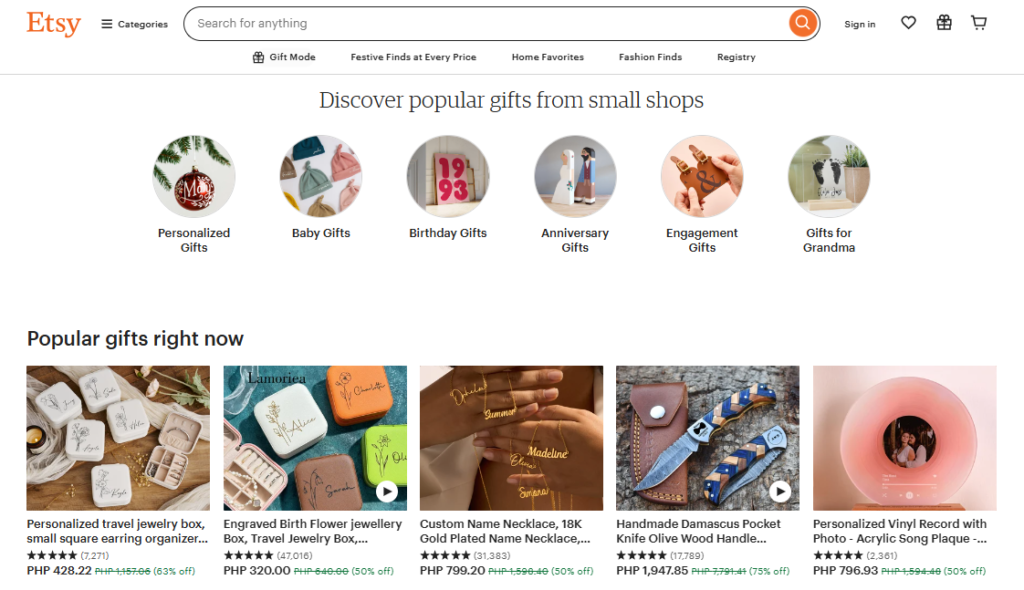Are you a creative looking for a new and exciting way to sell your art digitally? Whether you’re a designer, illustrator, or hobbyist, selling custom digital stamps and clip art can be an incredibly profitable venture. The best part? It’s a business model that doesn’t require massive upfront costs, and once you’ve created your products, they can continue generating passive income for months or even years.
In this post, we’ll dive into the strategies and tools you need to turn your artistic talent into a stream of income by selling custom digital stamps and clip art. From understanding what sells to how to market your creations, you’ll get all the insights to become a pro in this growing niche.
TL;DR
- Unlock your creative potential: Design unique, high-demand digital stamps and clip art.
- Master the art of marketing: Reach your target audience through effective online strategies.
- Build your brand: Establish a strong online presence and cultivate customer loyalty.
- Monetize your art: Explore various pricing strategies and sales platforms to maximize profits.
- Scale your business: Expand your product line and explore collaborations to grow your reach.
Designing Your Digital Masterpieces
Before you even think about marketing, you need killer designs. What makes a digital stamp or clip art piece stand out? It’s a combination of creativity, technical skill, and understanding your target audience. Let’s break down how to create designs that will sell.
Understanding Your Niche
Don’t try to be everything to everyone. Focus on a specific niche. Are you passionate about floral designs? Whimsical characters? Geometric patterns? Maybe you’re drawn to vintage aesthetics or modern minimalist styles. Identifying your niche allows you to target your marketing efforts effectively and build a strong brand identity. This focused approach helps you connect with a specific audience who appreciates your unique style.

Think about what you enjoy creating and what resonates with your target audience. Research popular trends on platforms like Etsy and Creative Market to see what’s selling well. Use tools like Etsy Trend Reports (if you’re selling on Etsy) or simply browsing popular shops to get a sense of current demand. For example, if you notice a surge in popularity of hand-drawn floral designs, you might focus your efforts on creating high-quality floral digital stamps.
Mastering the Tools of the Trade
The right tools can significantly impact your design process. Popular software options include Adobe Photoshop, Illustrator, and Procreate. These are industry-standard programs, offering powerful features but often come with a subscription cost.
- Adobe Photoshop: Ideal for photo manipulation, realistic effects, and detailed digital painting.
- Adobe Illustrator: Best for vector graphics, creating scalable logos, and illustrations with crisp lines.
- Procreate: A popular iPad app perfect for digital painting and sketching, known for its intuitive interface and powerful brushes.
If you’re a beginner, consider exploring free or affordable alternatives like:
- Krita: A free and open-source painting program with a wide range of brushes and features. It’s a strong alternative to Photoshop for digital painting.
- GIMP (GNU Image Manipulation Program): Another free and open-source image editor, similar to Photoshop in functionality, though it may have a steeper learning curve.
- Canva: While not as powerful as the others, Canva is excellent for creating simple graphics, social media posts, and basic digital stamps. Its user-friendly interface makes it perfect for beginners.
Experiment with different software to find what best suits your style and workflow. Don’t be afraid to try free trials or free versions to see what feels right for you before committing to a paid subscription.
Creating High-Quality Designs
High-resolution images are crucial for professional-looking digital stamps and clip art. Aim for at least 300 DPI (dots per inch) for crisp, clear prints. This ensures your designs look sharp even when printed at larger sizes. Pay attention to detail, ensuring your designs are clean, well-organized, and visually appealing. Consider using design principles like balance, contrast, and visual hierarchy to create aesthetically pleasing compositions.
- File Formats: Offer different file formats to cater to diverse customer needs. Common formats include:
- PNG: Supports transparency, ideal for digital stamps and clip art with transparent backgrounds.
- JPG: A widely compatible format, good for general use, but doesn’t support transparency.
- SVG: A vector format, allowing for scalable images without loss of quality, perfect for logos and designs that need to be resized frequently.
- PDF: Useful for offering layered files or providing multiple variations of a design.
Example: If you’re creating floral digital stamps, ensure the individual flowers are well-defined, the colors are vibrant and harmonious, and the overall composition is balanced and visually pleasing. Offer PNG files with transparent backgrounds so customers can easily overlay them onto their projects. You might also offer SVG versions for those who need scalable designs.
Marketing Your Digital Treasures
Creating amazing designs is only half the battle. You need a robust marketing strategy to reach your target audience. Let’s explore effective marketing techniques.
Building Your Online Presence
Establish a professional website or online store to showcase your work. Platforms like Etsy, Creative Market, and Shopify are popular choices for selling digital products. Each platform has its own strengths and weaknesses.
- Etsy: Great for handmade and craft items, strong built-in community, but takes a commission on sales.
- Creative Market: Focuses on digital assets, attracts a professional design audience, but has stricter quality standards.
- Shopify: Offers more customization and control over your store, but requires more technical setup and ongoing maintenance.
Ensure your website or online store is user-friendly, visually appealing, and easy to navigate. High-quality product photos and compelling descriptions are essential. Use professional-looking mockups to showcase how your designs can be used in real-world projects. For example, show your digital stamps used on greeting cards, scrapbook pages, or planner stickers.
Leveraging Social Media
Social media is a powerful tool for connecting with potential customers. Platforms like Instagram, Pinterest, and Facebook are ideal for showcasing your designs and engaging with your audience.
- Instagram: Ideal for visually driven content; use high-quality images and videos to showcase your designs. Use relevant hashtags like #digitalstamps #clipart #floraldesign etc.
- Pinterest: A visual search engine; create visually appealing pins that link directly to your shop.
- Facebook: Create a business page and run targeted ads to reach specific demographics interested in your niche.
Use relevant hashtags, participate in relevant communities, and run targeted ads to reach a wider audience. Engage with your followers, respond to comments, and run contests or giveaways to increase engagement. Tools like Buffer or Hootsuite can help you schedule your social media posts efficiently.
Content is King
Create valuable content that showcases your expertise and engages your audience. Blog posts, tutorials, and freebies can attract potential customers and build brand loyalty. Consider creating a free digital stamp or clip art to offer as a lead magnet to capture email addresses. This allows you to build an email list and nurture leads over time. Tools like Mailchimp or ConvertKit can help you manage your email marketing.
Marketing Your Digital Treasures
Creating amazing designs is only half the battle. To truly thrive in the competitive world of digital art, you need a robust and multifaceted marketing strategy that not only showcases your skills but also attracts the right clients and fosters a sense of abundance in your business. Let’s explore effective techniques that go beyond just showcasing your work.
Cultivating an Abundance Mindset for Business Success
Creating compelling content and utilizing effective social media strategies are crucial for marketing your digital products. However, attracting abundance and achieving your business goals also involves cultivating a positive and empowered mindset. The following video Fix Your Money Manifestation Now offers valuable insights into the power of money manifestation and how it can impact your business success.
For More Free Videos, Subscribe to the Rhodes Brothers YouTube Channel.
After watching, consider how you can apply these principles to your own business. Visualize your success, believe in your abilities, and take consistent action towards your goals. A positive mindset is a powerful tool in achieving your entrepreneurial dreams.
Collaborations and Partnerships
Collaborating with other creatives can significantly expand your reach. Partner with bloggers, influencers, or other artists to cross-promote your products and reach new audiences. This can be a powerful way to increase brand awareness and sales. For example, you could collaborate with a scrapbooking blogger to feature your digital stamps in their blog posts or tutorials.
Pricing Your Digital Art
Pricing your digital products strategically is crucial for profitability. Consider your time, effort, and the value your designs offer. Research competitor pricing to ensure your prices are competitive yet profitable. Experiment with different pricing models (e.g., individual sales, bundles, subscription boxes) to see what works best for your business. Tools like Etsy’s pricing calculator (if applicable) or simple spreadsheet calculations can help you determine a profitable price point. Consider offering different pricing tiers based on the number of designs or file formats included.
Actionable Steps for Selling Custom Digital Stamps and Clip Art for Creatives
Here’s a breakdown of practical, step-by-step strategies catering to different experience levels:
For Beginners
So, you’re ready to dive into the world of selling custom digital stamps and clip art, but you’re not sure where to start. Don’t worry! This simple, step-by-step guide will help you get started even if you have no prior experience in digital design or online selling. With the right approach, you can turn your creative talents into a profitable side hustle or even a full-time business.
Here’s how to get started in manageable stages, even if you’re a beginner:
- Niche Selection (1 week): Identify a specific niche you’re passionate about and skilled in. Research Etsy and Creative Market to see what’s trending and in demand within your chosen niche. Don’t try to be everything to everyone; focus on a specific style or theme (e.g., cute animals, vintage florals, geometric patterns).
- Skill Development (2-4 weeks): Learn the basics of digital art software. Start with free or affordable options like Canva, Krita, or GIMP. Focus on mastering fundamental design principles like composition, color theory, and line art. There are tons of free tutorials on YouTube and Skillshare.
- Design Creation (4-6 weeks): Create 5-10 high-quality digital stamps or clip art pieces within your chosen niche. Aim for at least 300 DPI resolution. Start with simpler designs and gradually increase complexity as you gain confidence.
- Platform Selection (1 week): Choose a platform to sell your creations. Etsy is beginner-friendly, while Creative Market requires higher design standards. Consider your comfort level and target audience.
- Shop Setup (1-2 weeks): Set up your shop on your chosen platform. Create professional product photos and compelling descriptions. Keep your branding consistent across all platforms.
- Initial Launch (Ongoing): List your first few designs and start promoting them on social media. Focus on building a small, engaged audience before scaling up.
For Intermediate Creatives
If you’ve already launched your first few designs and made some initial sales, congratulations! You’ve got the ball rolling. Now it’s time to refine your niche, leverage your existing success, and take your business to the next level. Intermediate creators face a different set of challenges—scaling, improving design skills, and optimizing the selling process—but with the right strategies, you can continue to grow your customer base and increase your profits.
Here’s how to refine your niche and build on your early success.
- Niche Refinement (1 week): Analyze your initial sales data to identify your best-selling designs and refine your niche accordingly. Focus on creating more of what resonates with your audience.
- Advanced Skill Development (Ongoing): Explore advanced features of your chosen design software. Learn techniques like creating seamless patterns, adding textures, and mastering color palettes. Consider investing in online courses or workshops to enhance your skills.
- Product Line Expansion (Ongoing): Expand your product line by creating complementary products. For example, if you sell floral digital stamps, consider creating matching papers, backgrounds, or embellishments.
- Marketing Optimization (Ongoing): Refine your marketing strategy based on your analytics. Experiment with different social media platforms, advertising strategies, and content formats. A/B test different approaches to see what works best.
- Branding Enhancement (Ongoing): Invest in professional branding elements like a logo and consistent visual style. This helps you build a recognizable brand and attract loyal customers.
- Collaboration and Partnerships (Ongoing): Reach out to other creatives in your niche for collaborations. Cross-promotion can significantly expand your reach and introduce your work to new audiences.
For Experienced Professionals
As an experienced professional in the world of selling custom digital stamps and clip art, you’re already familiar with the basics. You’ve built a solid portfolio, achieved consistent sales, and developed a loyal customer base. Now, it’s time to focus on long-term growth—by building a strong brand that sets you apart from the competition, streamlining your processes, and scaling your business to new heights.
In this stage, brand identity, consistency, and advanced marketing strategies become critical for sustainable success.
- Brand Building (Ongoing): Focus on building a strong brand identity and reputation. Consider creating a professional website and developing a unique brand voice.
- Product Diversification (Ongoing): Explore new product lines and expand your offerings beyond digital stamps and clip art. Consider creating digital courses, workshops, or printable products.
- Strategic Partnerships (Ongoing): Develop strong relationships with key influencers and businesses in your industry. Seek out high-profile collaborations that can significantly boost your brand visibility.
- Scaling Operations (Ongoing): Implement efficient workflows and consider outsourcing certain tasks to free up your time for creative work. Explore using project management tools and automating repetitive tasks.
- Community Building (Ongoing): Create a strong community around your brand by engaging with your customers and fostering a sense of belonging. Consider hosting online events or creating a private Facebook group.
- Business Development (Ongoing): Explore opportunities to license your designs or sell them wholesale to larger retailers. Consider expanding into international markets.
Regardless of your experience level
No matter where you are on your journey—whether you’re just starting out, refining your niche, or scaling your business as a seasoned professional—one principle remains constant: Always prioritize high-quality designs. Your products are the face of your business, and investing time in creating professional, well-crafted digital stamps and clip art can set you apart from the competition.
- Always prioritize high-quality designs. Invest time in creating professional, well-crafted products.
- Actively promote your work. Don’t be afraid to put yourself out there and share your creations with the world.
- Engage with your customers. Respond to inquiries promptly and provide excellent customer service.
- Continuously learn and improve. Stay updated on design trends and marketing techniques.
- Track your progress. Monitor your sales data and adjust your strategy as needed.
These steps provide a roadmap for success, adaptable to different skill levels and ambitions. Remember that consistency and perseverance are key to building a thriving business selling custom digital stamps and clip art.
Common Mistakes to Avoid When Selling Custom Digital Stamps and Clip Art
Avoiding these pitfalls is crucial for building a successful business. Let’s delve deeper into each mistake and explore actionable solutions.
Ignoring Market Research
Failing to research your target audience and competitor pricing is a recipe for disaster. It’s like launching a ship without a map – you might get somewhere, but likely not where you intended.
The Problem: Creating beautiful designs in a vacuum, without understanding what your target audience wants or what your competitors are charging, leads to wasted effort and low sales. You might be creating stunning artwork that nobody wants to buy, or pricing yourself out of the market.
The Solution:
- Target Audience Research: Who are you selling to? Are they scrapbookers, card makers, teachers, or graphic designers? Understanding their needs, preferences, and budget is crucial. Use tools like social media listening, surveys, and competitor analysis to gather insights.
- Competitor Analysis: Research your competitors on Etsy, Creative Market, and other platforms. Analyze their pricing, product offerings, and marketing strategies. What are they doing well? What are their weaknesses? This helps you identify opportunities and differentiate your offerings.
- Keyword Research: Use tools like Google Keyword Planner, Ahrefs, or SEMrush to identify relevant keywords your target audience is searching for. This helps you optimize your product listings and marketing materials for better search engine visibility.
Poor-Quality Designs
Creating low-resolution or poorly designed products is a surefire way to turn off potential customers. In the digital age, quality matters more than ever.
The Problem: Low-resolution images look pixelated and unprofessional, especially when printed. Poor design choices, such as unbalanced compositions or clashing color palettes, make your products unappealing.
The Solution:
- High-Resolution Images: Always aim for at least 300 DPI (dots per inch) for crisp, clear prints.
- Design Principles: Master fundamental design principles like composition, color theory, typography, and visual hierarchy. Use design software effectively to create balanced and visually appealing designs.
- File Formats: Offer a variety of file formats (PNG, JPG, SVG) to cater to different customer needs and software compatibility.
- Quality Control: Before launching your products, thoroughly review them for any errors or inconsistencies. Get feedback from trusted peers or beta testers.
Neglecting Marketing
Not actively promoting your products on social media and other channels is like having a fantastic store in a hidden alleyway – nobody will find it!
The Problem: Simply listing your products and hoping for sales is not a sustainable strategy. You need a proactive marketing approach to reach your target audience and build brand awareness.
The Solution:
- Social Media Marketing: Create a consistent social media presence on platforms relevant to your target audience (Instagram, Pinterest, Facebook, TikTok). Use high-quality images and videos, engage with your followers, and run targeted ads.
- Content Marketing: Create valuable content (blog posts, tutorials, freebies) that showcases your expertise and attracts potential customers.
- Email Marketing: Build an email list and send regular newsletters to keep your customers updated on new products and promotions.
- Paid Advertising: Consider running targeted ads on social media and search engines to reach a wider audience.
- SEO Optimization: Optimize your website and product listings for relevant keywords to improve your search engine ranking.
Uncompetitive Pricing
Pricing your products too high or too low can severely impact your profitability and sales. Finding the sweet spot is crucial.
The Problem: Pricing too high can deter potential customers, while pricing too low can undervalue your work and hurt your profit margins.
The Solution:
- Competitor Analysis: Research competitor pricing to understand the market rate for similar products.
- Cost Analysis: Calculate your costs (materials, software, time) to determine a minimum viable price.
- Value Proposition: Consider the value your designs offer to customers. Are they unique, high-quality, and time-saving? Pricing should reflect this value.
- Pricing Experiments: Try different pricing strategies (e.g., tiered pricing, bundles, discounts) to see what resonates best with your customers.
Lack of Customer Service
Ignoring customer inquiries or providing poor customer support damages your reputation and can lead to negative reviews. Happy customers are your best advocates.
The Problem: Slow response times, unhelpful answers, or ignoring customer issues can quickly erode trust and damage your brand image.
The Solution:
- Prompt Responses: Respond to customer inquiries promptly and professionally.
- Helpful Information: Provide clear and helpful information to address customer concerns.
- Problem Solving: Actively work to resolve any issues or complaints.
- Positive Interactions: Strive to create positive and memorable customer experiences.
- Feedback Mechanisms: Actively solicit customer feedback and use it to improve your products and services.
By addressing these common mistakes proactively, you can significantly increase your chances of success in selling custom digital stamps and clip art. Remember, building a thriving business takes time, effort, and a commitment to continuous improvement.
Frequently Asked Questions
How do I get started selling digital stamps and clip art?
Start by identifying your niche, mastering design software, and creating high-quality designs. Then, choose a platform to sell your work and develop a marketing strategy.
What software do I need to create digital stamps and clip art?
Popular options include Adobe Photoshop, Illustrator, Procreate, Krita, and GIMP. Choose the software that best suits your skill level and budget.
How do I price my digital products?
Research competitor pricing, consider your time and effort, and experiment with different pricing models to find what works best.
How do I market my digital stamps and clip art?
Utilize social media marketing, content marketing, email marketing, and paid advertising to reach your target audience.
Where can I sell my digital products?
Popular platforms include Etsy, Creative Market, Shopify, and your own website.
How do I protect my designs from copyright infringement?
Watermark your designs, register your copyrights, and include clear terms of use in your shop policies.
How can I build a strong brand identity?
Create a consistent brand aesthetic, develop a unique brand voice, and engage with your audience consistently.
What file formats should I offer?
Offer a variety of formats, including PNG, JPG, SVG, and PDF, to cater to different customer needs.
How can I handle customer inquiries and support?
Respond promptly to customer inquiries, provide clear and helpful information, and address any issues efficiently.
How can I scale my business?
Expand your product line, explore collaborations, and consider outsourcing tasks as your business grows.
Reap the Rewards: Your Digital Art Empire Awaits
So, you’ve learned the secrets to designing stunning digital stamps and clip art, mastering marketing strategies, and avoiding common pitfalls. Now it’s time to put your knowledge into action! Building a successful online business takes time and dedication, but the rewards are well worth the effort. You’re not just selling digital products; you’re sharing your creativity, passion, and unique artistic vision with the world.
Recap of Key Takeaways:
- Niche Down: Focus on a specific area of expertise.
- Master Your Tools: Utilize design software effectively.
- Create High-Quality Designs: Aim for at least 300 DPI.
- Build Your Online Presence: Establish a professional website or shop.
- Market Strategically: Use social media, content marketing, and paid ads.
- Price Competitively: Research the market and your costs.
- Provide Excellent Customer Service: Respond promptly and helpfully.
- Continuously Learn and Adapt: Stay updated on trends and best practices.
Your first step? Choose one actionable strategy from this guide and implement it today. Start designing, start marketing, start building your dream!
Thank you for joining us today. We hope this comprehensive guide empowers you to launch and grow your successful digital art business. For more valuable tips, tutorials, and inspiration, be sure to check out and subscribe to the Rhodes Brothers YouTube Channel for the latest videos and information to help you succeed.
Resource List
Software
- Adobe Photoshop
- Adobe Illustrator
- Procreate
- Krita (Free and Open Source)
- GIMP (Free and Open Source)
- Canva (Freemium)
- Affinity Designer (One-time Purchase)
- Clip Studio Paint (Subscription or One-time Purchase)
Marketing & Sales Platforms
- Etsy
- Creative Market
- Shopify
- WordPress (with WooCommerce plugin)
- Squarespace
Marketing Tools
- Buffer
- Hootsuite
- Mailchimp
- ConvertKit
- Canva (for social media graphics)
- Google Analytics
- SEMrush (SEO)
- Ahrefs (SEO)
Design Resources
- Skillshare (online courses)
- Udemy (online courses)
- YouTube (tutorials)
- Pinterest (inspiration)
- Dribbble (design inspiration)
- Behance (design inspiration)
Books
- “The Design of Everyday Things” by Don Norman (for understanding user experience)
- “Building a StoryBrand” by Donald Miller (for effective marketing messaging)
Selling Custom Digital Stamps and Clip Art Cheat Sheet
- Niche Down: Find your specialty.
- High-Quality Designs: Aim for 300 DPI or higher.
- Master Design Software: Explore options like Photoshop, Illustrator, Procreate.
- Online Presence: Create a professional website or shop.
- Marketing Strategy: Utilize social media, content marketing, and paid ads.
- Competitive Pricing: Research your competitors.
- Customer Service: Respond promptly and helpfully.
- File Formats: Offer PNG, JPG, SVG, and PDF.
- Brand Identity: Create a consistent aesthetic and voice.
- Scale Your Business: Expand your product line and explore collaborations.
- Legal Protection: Watermark and register copyrights.
- Market Research: Understand your target audience and trends.
- Content Creation: Blog posts, tutorials, freebies.
- Collaborations: Partner with other artists and influencers.
- Customer Feedback: Actively seek and incorporate feedback.
- Continuous Learning: Stay updated on design trends and marketing strategies.
- Financial Management: Track income and expenses.
- Inventory Management: Organize your digital assets efficiently.
- Customer Relationship Management (CRM): Utilize tools to manage customer interactions.
- Email Marketing: Build an email list and send newsletters.
- Social Media Engagement: Interact with your followers regularly.
- Analytics Tracking: Monitor website traffic and sales data.
- SEO Optimization: Improve your website’s search engine ranking.
- Paid Advertising: Consider running targeted ads on social media and search engines.






